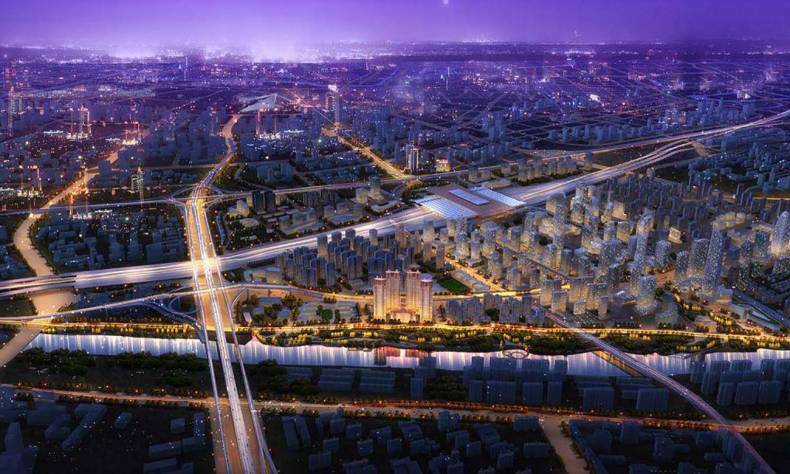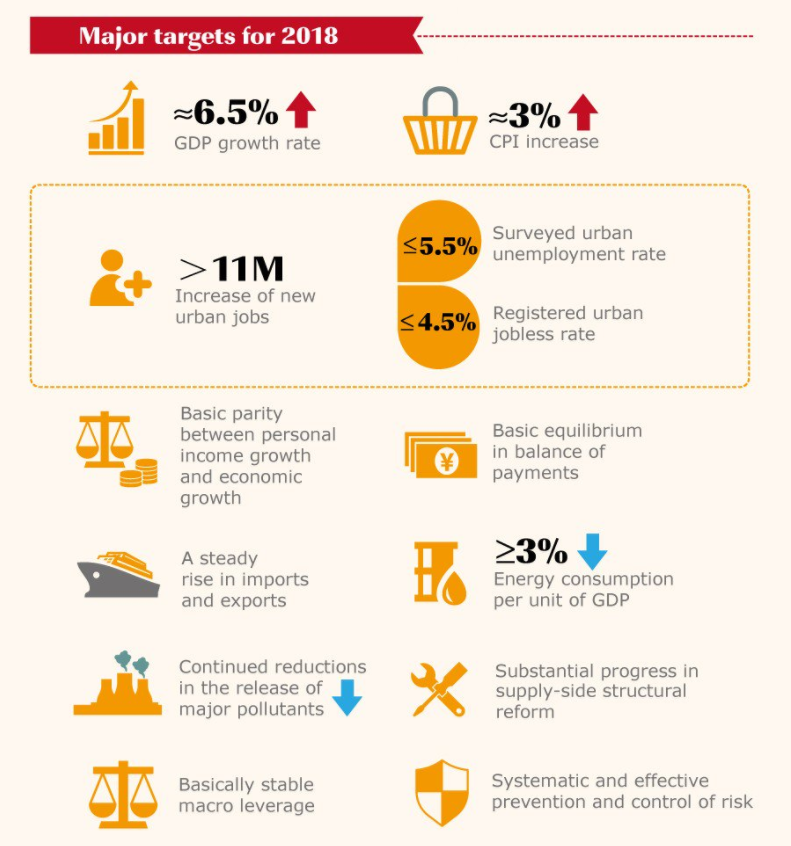
6.5% GDP Growth Target for 2018 is Prudent and Reasonable
The GDP growth target is appropriate. Achieving this goal will be a real challenge, but it is quite possible that China can surpass it.
By Cao Heping
According to the government work report, major projected targets have been set for development in 2018: GDP growth of around 6.5 percent; CPI increase of around 3 percent; over 11 million new urban jobs, the surveyed urban unemployment rate within 5.5 percent, and the registered urban jobless rate within 4.5 percent.

The 6.5% Growth Target is Appropriate
First, when the change in the economic structure accelerates through the emergence of the internet and sharing economy, those conventional measures that used to be macro-management tools are no longer adequate responding to the latest economic trend. It is prudent for the government to set economic moderate growth targets as macro-control ability weakens.
Second, the goal set should leave room for international political and economic uncertainty. The global economic structure is in a period of fission owning to technical change, and trade protectionism is rising. So the target is slightly slower than last year’s GDP growth rate.
Third, given the size of the Chinese economy act and the pressure of environmental protection continues to grow, setting a GDP growth target of around 6.5% leaves room for environmental management.
Above all, GDP growth of around 6.5 percent is prudent and reasonable, which is also the conclusion from the experience of recent years. Achieving this goal will be a real challenge, but it is quite possible that China can surpass it.
Rural Migrant Workers Covered in the Surveyed Urban Unemployment Rate
The surveyed urban unemployment rate covers rural migrant workers and other permanent urban residents. This year, for the first time we are using this indicator as a projected target; this is intended to give a fuller picture of employment and to better reflect the requirement that development is to be shared by everyone.
The surveyed urban unemployment rate covers rural migrant workers and other permanent urban residents. This is a progressive change to the system to increase equality of access to national social security.
China’s surveyed urban unemployment rate did not cover the rural population in the past, but used a statistical method in accordance with the UN methodology for employment statistics: the definition is that the unemployment statistics object refers to the group of people who have no means of production and obtain wage income through labor participation. Only urban residents meet this criterion. Rural residents who have their own land or forest in accordance with China’s rural land contracting belong to the group who possess means of production.
This kind of statistical approach makes some sense in that when a rural migrant worker lost his job, in theory he could go home and use his land to grow food and generate an income. But in practice, there is a problem: many rural families settle in town. Though they still have a rural “hukou” (registered permanent residence ) and land, they have already transferred or leased their land to others, and they will not reengage in agricultural work unless they are forced to.
As the workplace and the nature of employment shifts, the “sunk costs” are too high. From the perspective of residency, these people actually belong to the urban non-agricultural population.
To cover rural migrant workers and other permanent urban residents in the surveyed urban unemployment rate is a progressive institutional arrangement that will help to equalize access to social welfare during the process of rural and urban economic integration. Moreover, from the perspective of macro-management, the new policy will help to provide a more accurate measure of the impact of the macro economy on the short-term labor market to allow for better adjustment of the implementation of the policy.
The end result is that integrated management of the urban and rural economies will be achieved through more accurate statistical management of rural migrant workers and other permanent urban residents, so as to realize common prosperity
“We will raise the basic medical insurance and serious disease insurance benefits. Per capita government subsidies for basic health insurance for rural and non-working urban residents will be increased by 40 yuan, half of which will be used for the serious disease insurance scheme. We will expand the coverage of interprovincial on-the-spot settlement of medical bills through
basic insurance accounts and make this applicable to community-level hospitals, and to rural migrant workers and other workers and business owners without local household registration.” To increase public satisfaction, wellbeing and security is also highlighted in this year’s government work report.
With a new round of urban-rural integration and convergence of regional development, we can anticipate that the living standards of our people will be further improved.
Cao Heping, head of Department of Development Economics, School of Economics, Beijing University
Editor: Cai Hairuo
 Facebook
Facebook
 Twitter
Twitter
 Linkedin
Linkedin
 Google +
Google +










